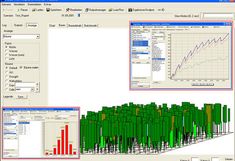dynamic forest ecosystem models
Development and application of dynamic forest ecosystem models
The Institute of Silviculture develops dynamic forest ecosystem models as tools for silvicultural planning and decision support. With regard to the long planning period in forestry and the impacts of global change on forest ecosystems dynamic models containing relevant key ecosystem processes are to favour over static concepts (e.g., yield tables) in forest planning. Furthermore, the ongoing paradigm change from sustainable timber management to sustainable forest management in a broader sense introduces a number of new relevant forest services (e.g., non-wood products) into forest management planning. To tackle this needs, demands on models for silvicultural planning are
- realistic, three-dimensional spatial structure, to capture effects of different silvicultural treatments with regard to growth, regeneration etc.
- include the whole set of tree species potentially available for a site
- track the main element cycles (Carbon, Nitrogen)
- react realistically to scenarios of climate change (i.e., include key ecosystem processes)
This demands are recognized in the development of the PICUS model family at the Institute of Silviculture. Such models give the opportunity to assess climate change impacts as well as to study the effects of different silvicultural treatments (“virtual forest management”- several rotation periods in a few minutes) with regard to timber, regeneration but also non-wood products and ecosystem services.

